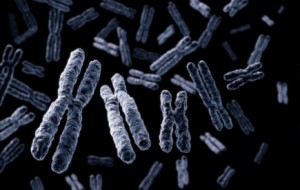
Yale Scientists Say AAV5 is Best for Transduction in Primates
Scientists who research genetic disorders might want to reconsider the way they transfer therapeutic genes to cells in the central nervous system.
Adeno-associated virus (AAV) vectors are the most common way to transfer DNA into neural cells because of their nonpathogenic nature and long-term transduction abilities. Specifically, researchers most frequently use AAV serotype 2 (AAV2). But scientists at the Yale University School of Medicine believe that AAV serotype 5 (AAV5) is a more effective way to go when carrying out genetic transduction in the nonhuman primate brain.
In their study, the research team injected the brains of St. Kitts green monkeys with vectors from AAV serotypes 1-6, each of which contained an enhanced green-fluorescent protein reporter gene (GFP). One month later, immunohistochemistry and unbiased stereology were used to analyze the tissue and count the number of GFP cells.
“We used Stereo Investigator to do all of the quantitative comparisons between the different vector serotypes and their gene expression,” explained Dr. Gene Redmond.
Though all six serotypes were able to generate the reporter gene in the monkey’s brain cells, AAV serotype 5 was by far the most efficient, according to the study.
“The goal in human neurosurgical procedures delivering viral vectors to the brain is to make as little perturbation of brain tissue as is possible while delivering the needed gene for the appropriate duration. Viral vectors that can generate a large overall area of transduction and have a tropism for the desired cell type may allow for the delivery of the smallest possible amount of vector, resulting in maximal gene delivery while minimizing tissue damage, inappropriate spread, or the possibility of incorporation into the host genome.” (from the paper)
Read the free abstract or download the complete paper “Comparative Transduction Efficiency of AAV Vector Serotypes 1–6 in the Substantia Nigra and Striatum of the Primate Brain.“
Eleni A Markakis, Kenneth P Vives, Jeremy Bober, Stefan Leichtle, Csaba Leranth, Jeff Beecham, John D Elsworth, Robert H Roth, R Jude Samulski and D Eugene Redmond Jr, “Comparative Transduction Efficiency of AAV Vector Serotypes 1–6 in the Substantia Nigra and Striatum of the Primate Brain” (Molecular Therapy (2010) 18 3, 588–593)
If you enjoyed this article, fan us on Facebook and follow us on Twitter to get the latest news about scientific advancements being made by MBF Bioscience customers.



